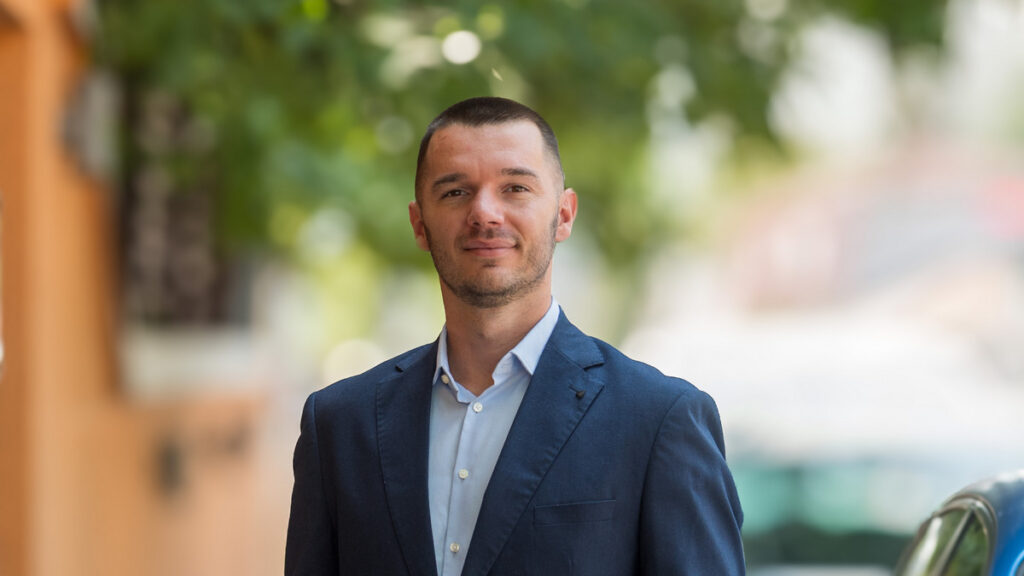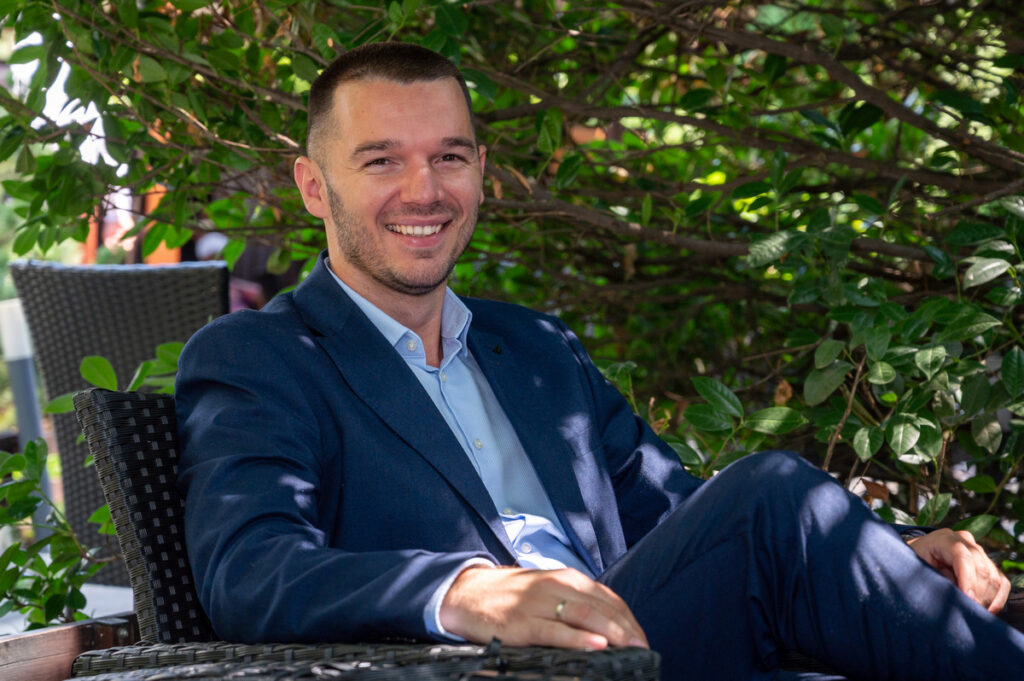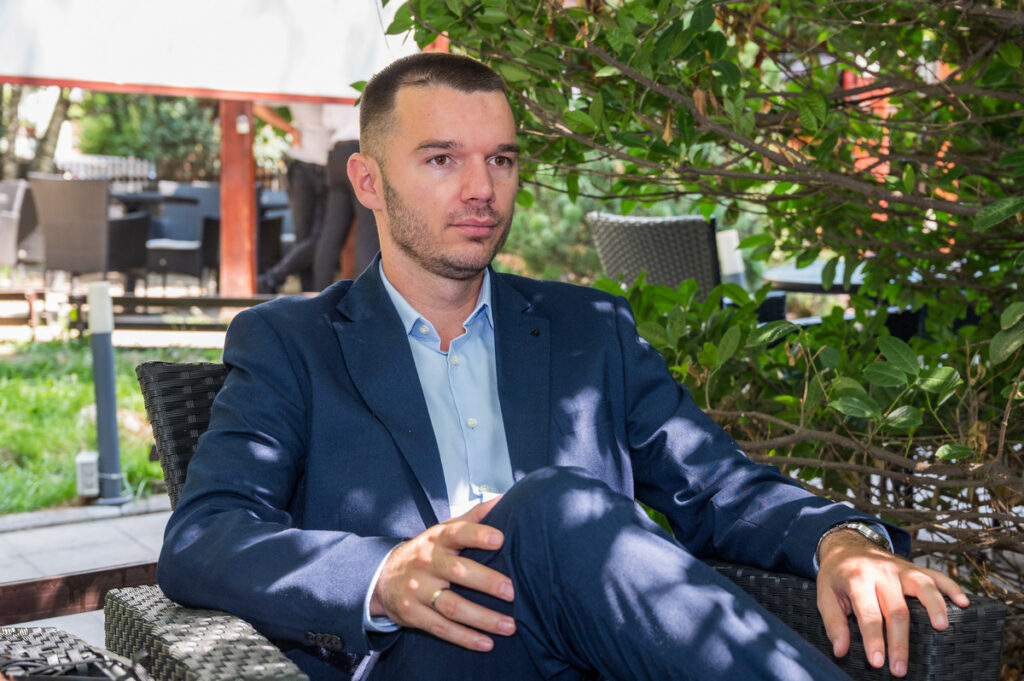How the IT sector navigates global trends, local challenges, and opportunities for growth

BUSINESS INTERVIEW
by Dragan Nikolić
This interview features Marko Vučetić, Director of the Serbian IT Association (SITA). The conversation took place during his recent appearance in Belgrade and explores how the IT sector in Serbia is navigating global trends such as artificial intelligence, cybersecurity, and sustainable digital infrastructure, while addressing local challenges and opportunities for growth.
The IT industry is not very well known, mostly because it tends to be quiet and not particularly focused on end consumers, which makes its public visibility rather low. What is the real picture of this sector in Serbia?
Indeed, the IT industry in our country is often “invisible” to the wider public, precisely because its products and services are usually not intended for end consumers, but for businesses around the world. However, the IT sector in Serbia is one of the fastest-growing and most stable. It generates more than 4 billion euros in annual exports, employs a large number of highly educated professionals, and has become the backbone of our economy. When it comes to the members of the Serbian IT Association, they are already achieving revenues of nearly 400 million euros, employing around 5,000 people, with service exports worth almost 300 million euros.

What has influenced the development of the IT industry in our country? What are our advantages compared to the rest of the world?
There are several key factors: a strong engineering tradition, high-quality technical education, adaptability, and the talent of our professionals. In addition, tax incentives and certain benefits from the previous period have made Serbia an attractive destination for the development centres of global IT companies. Furthermore, the timing of the Serbian IT sector’s growth — at a moment when the world was already deeply engaged in digital transformation — allowed us to skip certain phases and immediately engage with modern technologies.
We are not asking for privileges, but for equal treatment and clearly set goals
And what are the drawbacks?
The biggest challenges for the domestic IT sector are the lack of predictability in tax policy, the generally unpredictable business environment, and the absence of a long-term strategy for the development of the technology industry. Without systematic support for the growth of domestic companies, strengthening research capacities, and stronger links with the education system, it won’t be easy to maintain technological sovereignty. Nevertheless, despite these challenges, Serbia still represents a “strong” market, primarily thanks to the knowledge and expertise of our IT professionals.
Your association recently issued a statement expressing concern over the abolition of subsidies and benefits for the IT sector, which could lead to companies withdrawing and investments decreasing. How serious is this problem, and how can it be solved?
If you ask me, it is much more serious than most people in the community think. We are already receiving signals from foreign investors that they are considering relocating teams to other countries in the region that offer more stable and predictable conditions. The solution lies in urgent dialogue and in building a clear, long-term framework that will guarantee business continuity. We are not asking for privileges, but for equal treatment and clearly set goals. IT must be a priority because of all the indicators that are visible and its impact on our economy. From the very beginning, we at SITA have been available to provide help and support from the business side. Our goal is to ensure a more stable market with even more investments, more employees, and better conditions for all our IT companies in Serbia.

Is the attitude of foreign companies in the IT industry towards workers in Serbia colonial, as is the case with other industrial sectors in our country?
I wouldn’t say that the attitude of foreign IT companies towards workers in Serbia can be described as colonial. The IT industry operates in a global market where talent is the key value and professional mobility is high. Because of this, companies—whether domestic or foreign—must offer competitive conditions to attract and retain the best people. The presence of foreign firms here brings new knowledge, technologies, and business standards, and often provides opportunities to work on projects of global scope. Our challenge is to strengthen the domestic IT ecosystem in parallel, so that in addition to playing the role of a reliable partner in global value chains, we also develop our products, brands, and intellectual property. The Serbian market has few companies that develop their products; there is much work to be done there, but I must admit it is not an easy task.
AI, cybersecurity, and green infrastructure are no longer optional — they are essential
It is well known that salaries in your sector are far higher than the average salaries in Serbia. How do they compare, however, to salaries in the same sector in more developed countries?
Salaries in the IT sector in Serbia are still significantly above the national average, and some senior engineers, despite the current crisis, can earn between €5,000 and €9,000 net per month. However, our market is becoming increasingly expensive, which is also a confirmation of the quality of domestic engineers and the competitiveness of our companies. To maintain this advantage over other markets, we need to think systemically and build a predictable business environment. The state plays a key role in this by supporting the domestic IT sector, introducing tax incentives, and creating a stable and stimulating framework for further growth and development.
How does the IT sector in Serbia respond to global trends such as artificial intelligence, cybersecurity, and sustainable digital infrastructure?
Our IT community in Serbia is very active in areas such as artificial intelligence, cybersecurity, and sustainable digital infrastructure. There is a growing number of startups and teams developing AI solutions, and several international centres in Serbia are already working on advanced AI models and tools. Cybersecurity is an area in which domestic companies are already recognised, while sustainability and green infrastructure are becoming integral parts of every serious IT project.
Through the channels of the Serbian IT Association, we encourage domestic companies to join forces and compete for international projects, and gain new contacts and clients. At the same time, our global members such as Endava, Luxoft, Epam, DataArt, JetBrains, and other leaders in these areas provide excellent examples and first-hand knowledge. Our idea is for our smaller members to learn from the big players about AI, cybersecurity, sustainable infrastructure, and other “trend” topics, so that the entire sector keeps pace with the global market.